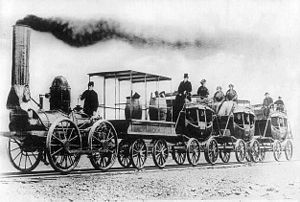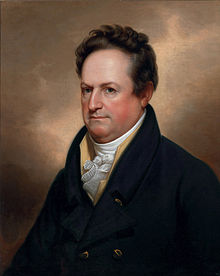
The Erie Canal is a historic canal in upstate New York that runs east-west between the Hudson River and Lake Erie. Completed in 1825, the canal was the first navigable waterway connecting the Atlantic Ocean to the Great Lakes, vastly reducing the costs of transporting people and goods across the Appalachians. In effect, the canal accelerated the settlement of the Great Lakes region, the westward expansion of the United States, and the economic ascendancy of New York State. It has been called "The Nation's First Superhighway."

Schenectady is a city in Schenectady County, New York, United States, of which it is the county seat. As of the 2020 census, the city's population of 67,047 made it the state's ninth-largest city by population. The city is in eastern New York, near the confluence of the Mohawk and Hudson rivers. It is in the same metropolitan area as the state capital, Albany, which is about 15 miles (24 km) southeast.

The Maple Leaf is an international passenger train service operated by Amtrak and Via Rail between Pennsylvania Station in New York City and Union Station in Toronto via the Empire Corridor. Daily service is offered in both directions; the 544-mile (875 km) trip takes approximately 12 hours, including two hours for U.S. or Canadian customs and immigration inspection at either Niagara Falls, New York, or Niagara Falls, Ontario. Although the train uses Amtrak rolling stock exclusively, the train is operated by Via Rail crews while in Canada and by Amtrak crews in the United States. Service began in 1981.

The New York Central Railroad was a railroad primarily operating in the Great Lakes and Mid-Atlantic regions of the United States. The railroad primarily connected greater New York and Boston in the east with Chicago and St. Louis in the Midwest, along with the intermediate cities of Albany, Buffalo, Cleveland, Cincinnati, Detroit, Rochester and Syracuse. New York Central was headquartered in New York City's New York Central Building, adjacent to its largest station, Grand Central Terminal.

The Empire Service is an Inter-city rail service operated by Amtrak within the state of New York in the United States. The brand name originated with the New York Central Railroad in 1967. Trains on the line provide frequent daily service along the 460-mile (740 km) Empire Corridor between New York City and Niagara Falls via Albany, the state capital.
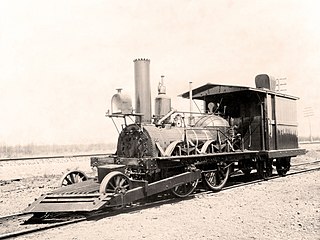
John Bull is a historic British-built railroad steam locomotive that operated in the United States. It was operated for the first time on September 15, 1831, and became the oldest operable steam locomotive in the world when the Smithsonian Institution ran it under its own steam in 1981. Built by Robert Stephenson and Company, it was initially purchased by and operated for the Camden and Amboy Railroad, the first railroad in New Jersey, which gave it the number 1 and its first name, "Stevens". The C&A used it heavily from 1833 until 1866, when it was removed from active service and placed in storage.

The Delaware and Hudson Railway (D&H) is a railroad that operates in the Northeastern United States. In 1991, after more than 150 years as an independent railroad, the D&H was purchased by the Canadian Pacific Railway (CP). CP operates D&H under its subsidiary Soo Line Corporation which also operates Soo Line Railroad.

The Boston and Albany Railroad was a railroad connecting Boston, Massachusetts to Albany, New York, later becoming part of the New York Central Railroad system, Conrail, and CSX Transportation. The line is currently used by CSX for freight. Passenger service is provided on the line by Amtrak, as part of their Lake Shore Limited service, and by the MBTA Commuter Rail system, which owns the section east of Worcester and operates it as its Framingham/Worcester Line.
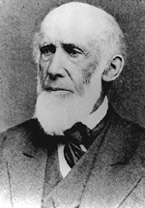
John Bloomfield Jervis was an American civil engineer. America's leading consulting engineer of the antebellum era (1820–60), Jervis designed and supervised the construction of five of America's earliest railroads, was chief engineer of three major canal projects, designed the famous, pioneering, DeWitt Clinton steam locomotive in 1831 while with the Mohawk & Hudson RR, designed the first locomotive with a swiveling 4-wheeled front bogie truck in 1832 for the M&H RR, designed and built the 41-mile Croton Aqueduct – New York City's fresh water supply from 1842 to 1891 – and was a consulting engineer for the Boston water system.

The Mohawk & Hudson Railroad was the first railroad built in the state of New York and one of the first railroads in the United States. It was so-named because it linked the Mohawk River at Schenectady with the Hudson River at Albany. It was conceived as a means of allowing Erie Canal passengers to quickly bypass the circuitous Cohoes Falls via steam powered trains.

George William Featherstonhaugh was a British-American geologist and geographer. He was one of the proposers of the Albany and Schenectady Railroad and was the first geologist to the US government. He surveyed portions of the Louisiana Purchase for the US government.
Central Avenue, in Albany, New York, is an 11-mile (5 km) stretch in Albany County, of the 16-mile Albany-Schenectady Turnpike, which runs from Lark Street in the city of Albany, westward through the towns of Colonie, New York and Niskayuna, New York, to the city of Schenectady, New York. In the city of Albany it is called Central Avenue, in Colonie it is known as Central Avenue or Albany Schenectady Road, and in Schenectady County it is called State Street. The entire route is also called Route 5.
Henry Ramsay was an American civil engineer and for a short time New York State Engineer and Surveyor in 1853.
John T. Clark was an American civil engineer and politician from Utica, New York.
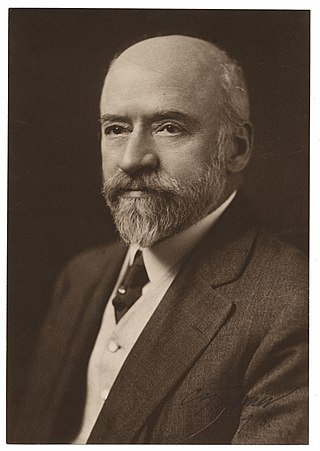
Charles Yardley "C. Y." Turner was an American painter, illustrator, muralist and teacher. His genre scenes and American historical paintings were popularized through engravings and book illustrations.

Downtown Schenectady is the central business district for the city of Schenectady, New York. It originated in the 1820s with the moving of the commercial and industrial interests east from the original 17th and 18th century settlement, spurred on by the development of the Erie Canal. Home to the headquarters and major manufacturing plants of two large corporations, General Electric and American Locomotive Company, Downtown Schenectady catered to tens of thousands of workers in its heyday. Typical of the post-industrial Northeastern United States and Upstate New York in particular, Downtown Schenectady saw a decline in manufacturing and population starting in the 1970s. Recent construction and renovation has caused the downtown area to become an entertainment mecca for New York's Capital District anchored by Proctor's Theatre.
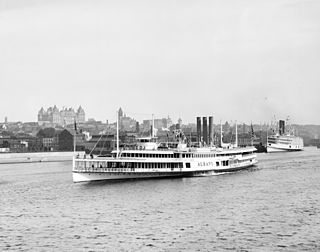
The history of Albany, New York from 1784 to 1860 begins with the ratification of the Treaty of Paris by the Congress of the Confederation in 1784 and ends in 1860, prior to the American Civil War.
The Hudson River is a 315-mile (507 km) river in New York. The river is named after Henry Hudson, an Englishman sailing for the Dutch East India Company, who explored it in 1609, and after whom Canada's Hudson Bay is also named. It had previously been observed by Italian explorer Giovanni da Verrazzano sailing for King Francis I of France in 1524, as he became the first European known to have entered the Upper New York Bay, but he considered the river to be an estuary. The Dutch called the river the North River – with the Delaware River called the South River – and it formed the spine of the Dutch colony of New Netherland. Settlements of the colony clustered around the Hudson, and its strategic importance as the gateway to the American interior led to years of competition between the English and the Dutch over control of the river and colony.

William Buchanan was an American mechanical engineer. He spent most of his career designing high-speed steam locomotives for the New York Central Railroad including the New York Central and Hudson River Railroad No. 999 locomotive, designed to travel over 100 miles per hour (160 km/h). He also designed and improved freight locomotives for hauling heavy commercial freight. He was an authority on mechanical engineering in America and Europe and was elected to membership of the Institute of Civil Engineers of London.
